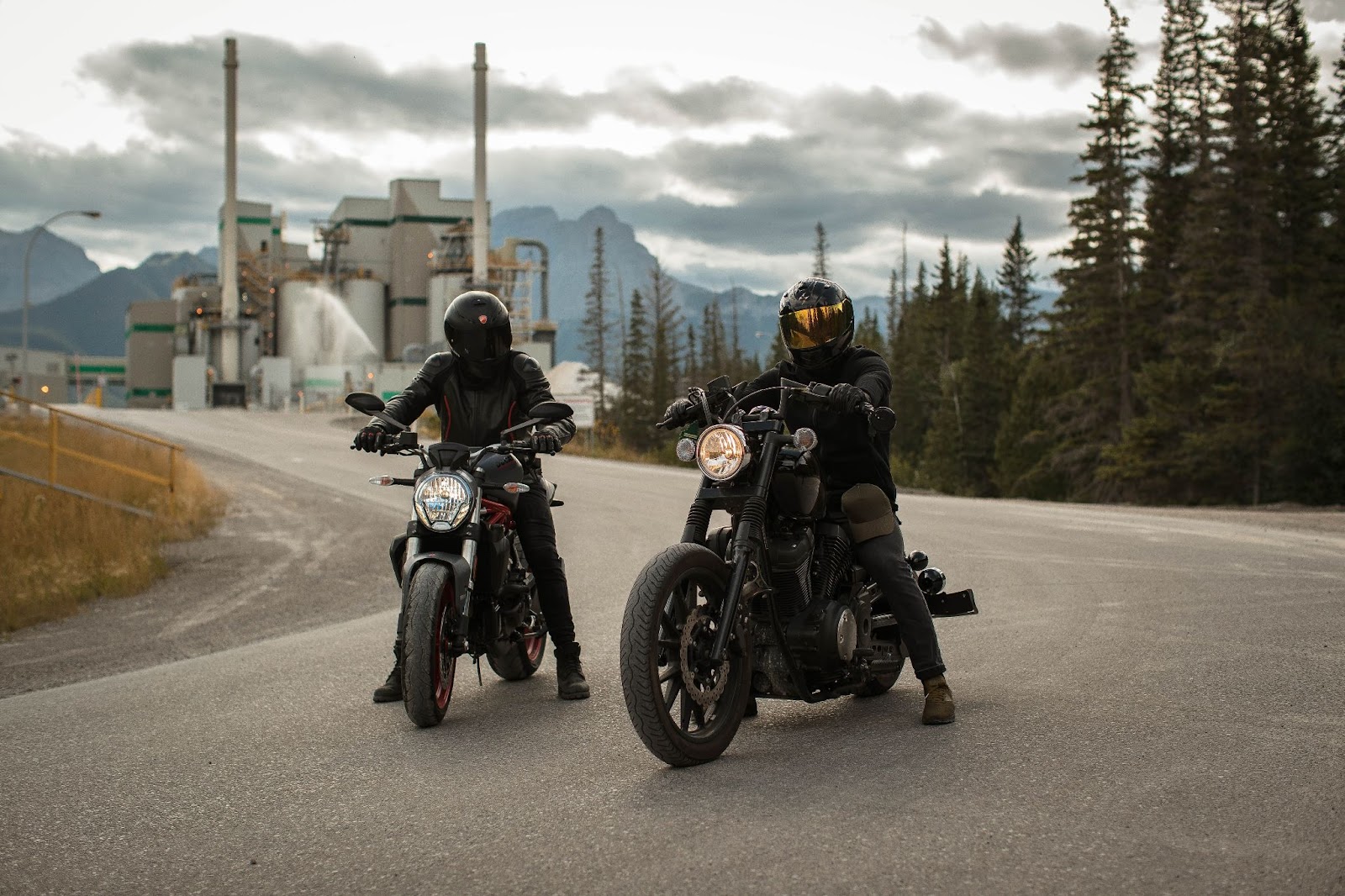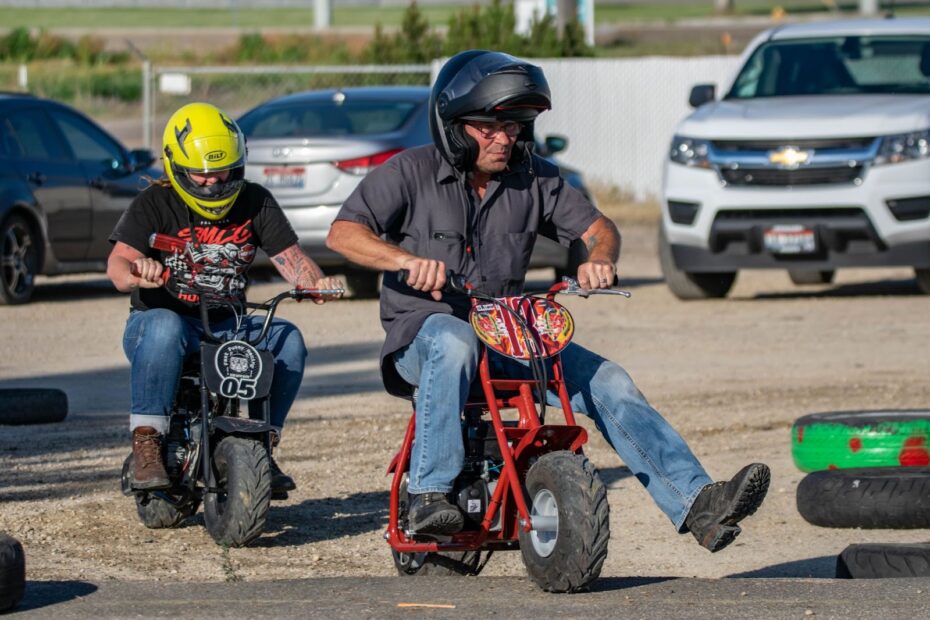Why Do Bucket Racing Seats Say For Off Road Use Only?
Bucket racing seats often come with a label that reads “For Off Road Use Only.” This is because these types of seats are not suitable for use on conventional roads due to their design and construction. The label serves as a warning to users that the seat may not comply with safety regulations required for public road use.
These types of racing seats are designed specifically for high-performance driving and racing conditions, which involve off-road tracks or closed circuits. Their design provides better support and protection for the driver during high-speed maneuvers and sudden stops. They typically have more extensive side bolsters, higher backrests, and harness slots than conventional car seats.
It’s important to note that installing bucket racing seats in a regular car violates safety regulations due to its non-compliance with the crash-testing standards required by law. Moreover, using them in a public roadway can lead to legal consequences and problems with insurance claims in case of an accident.
To enjoy the benefits of bucket racing seats without violating rules or endangering oneself, it’s best to use them appropriately- in an off-road environment only. These environments provide safe areas where their full range of features can be utilized without fear of legal complications or accident claims. Using these seats in unsafe locations will defeat their purpose and compromise driver safety.
Therefore, it’s crucial to follow instructions provided by manufacturers carefully before buying or installing these specialized racing seats to avoid any potential risks that might arise unintentionally. By doing this, drivers can ensure maximum performance while still adhering to the proper regulations mandated by law for public roadways.
Labeling bucket racing seats for off-road use only is like putting a Caution: Hot warning on a cup of coffee.
The Purpose of the Label
To understand why bucket racing seats are labeled ‘For Off-Road Use Only’, in the section ‘The Purpose of the Label’, we discuss two sub-sections: Safety Regulations and Liability Concerns, and The Manufacturer’s Responsibility to Label and Warn Users. These sub-sections provide insights into the legal and safety aspects of the manufacturer’s decision to use this label.
Safety Regulations and Liability Concerns
A critical aspect of product development is the implementation of safety regulations and the avoidance of potential liability concerns. Manufacturers must ensure that their products do not pose any harm to consumers, and labels play a crucial role in communicating vital information to buyers. It is essential for companies to adhere to various guidelines and standards when designing their labels, such as font size regulations, specific phrasing requirements, and the positioning of hazard warnings.
Moreover, labels serve as a form of protection for manufacturers against lawsuits. If a product does cause harm to a consumer due to improper use or neglect of warnings listed on the label, manufacturers may be less vulnerable to legal challenges. Furthermore, enforcing clear labelling ensures that companies can demonstrate compliance with regulatory bodies imposing penalties for failure to comply.
Good examples abound of how misinterpretations hinged on unclear or misleading labelling. For instance, in 1982, confusion regarding Tylenol’s Dosage instructions (labelled “Extra-Strength”) led to seven deaths resulting from cyanide poisoning after drug tampering occurred in supermarkets across Chicago. Although Johnson & Johnson ultimately avoided liability once proved innocent due to its immediate actions at recalling affected products in resealable tamper-proof packaging and issuing safety seals upon return), this disaster could have been prevented by clearer warnings regarding dosage level clarity via precise dosage per milligram weights that were previously suggested by their research team.
All in all, Labels are your protective first line against fatal miscommunications implicated by ambiguity while informing customers better about safe usage protocols – Opting for clarity always helps!
Labeling is a manufacturer’s way of saying, ‘I warned you, don’t blame me when things go wrong’.
The Manufacturer’s Responsibility to Label and Warn Users
The legal obligation of the producer to label and caution consumers is crucial. The label serves to inform and warn users about the usage, possible hazards, and safety information of products. It is mandatory for manufacturers to provide clear instructions, warnings, and guidelines regarding their products.
|
The Manufacturer’s Responsibility |
Label |
Cautions |
Safety Information |
|
Provide Information |
Clear Instructions |
Warnings About Hazards |
Safety Guidelines for Use |
|
Comply with Regulations |
FDA Approved Labels |
Hazard Statements |
Risk Phrases |
In addition to the legal requirements, manufacturers often go beyond the call of duty by including environmental impact statements, recyclability information, and sustainability certifications in their product labels.
A prominent example of a company that prioritizes labeling information and consumer safety is Johnson & Johnson. In 1982, they were faced with various lawsuits regarding their popular Tylenol brand after several individuals died from ingesting cyanide-laced capsules. In response, Johnson & Johnson created new tamper-resistant packaging while also launching a nationwide recall campaign as an attempt to protect consumers’ safety. This effort helped establish greater trust in the company and its dedication to customer health.
Thus, it is evident that labeling plays a vital role in ensuring transparency between producers and consumers whilst also prioritizing public safety.
Why settle for a bucket when you can have a whole dang sofa in your car?

Limitations of Bucket Racing Seats for Street Use
To address the limitations of bucket racing seats for street use with regard to comfort, visibility, and accessibility, the sub-sections that follow will briefly introduce the problems caused by these factors. The lack of comfort and adjustability may lead to discomfort and even pain during prolonged use. Poor visibility and accessibility, on the other hand, can hinder maneuverability and make it harder to get into and out of the vehicle.
Lack of Comfort and Adjustability
Highly specialized Bucket racing seats often lack the necessary comfort and adjustability required for street use. These seats are designed to provide optimal support and control when driving on the track but fail to cater to the broader needs of a daily driver.
The ergonomics of the Bucket racing seat often cause discomfort by maintaining an intentionally rigid posture that puts undue pressure on specific areas of the body, causing fatigue during long drives. Additionally, these seats do not have adequate adjustability features such as lumbar or headrest support, which can further exacerbate discomfort.
However, some manufacturers offer modified racing seats that address these concerns by incorporating more comfortable padding and additional adjustment features. Investing in such a seat is highly beneficial in enhancing the overall driving experience and minimizing long-term health effects.
It is pertinent to consider that installing modified Bucket racing seats requires specialized technical skills and may require additional modifications to ensure compatibility with your current vehicle setup. Seeking professional assistance can significantly reduce any potential risks associated with installation, regardless of your expertise level.
Investing in modified Bucket racing seats can be an excellent choice for those looking for improved comfort and support while driving daily. It allows for customization based on individual needs while keeping performance at maximum capacity.
Driving with a bucket racing seat is like trying to navigate a maze blindfolded – good luck finding anything you dropped on the floor or checking your blind spot without risking a dislocated shoulder.
Poor Visibility and Accessibility
The limited visibility and accessibility of bucket racing seats pose significant challenges for their use on the street. The design of these seats is focused on providing a maximum level of support during high-speed driving, which can compromise the comfort and safety of everyday street use.
In particular, the deep bucket shape can limit visibility by restricting the driver’s line of sight. This can make it difficult to see traffic lights, road signs and other important visual cues while driving. Additionally, the narrow profile of bucket seats can make entering and exiting the vehicle more cumbersome, especially for individuals with mobility issues.
Moreover, the lack of adjustable lumbar support and seat height adjustment can make bucket seats uncomfortable for longer trips. This discomfort can lead to poor posture and muscle strain over time, increasing the risk of injury in the event of an accident.
As such, when considering the use of bucket racing seat for street purposes or daily commutes, it is important to weigh its potential benefits against these limitations. It is advisable to opt for seats that offer adjustability in terms of height and lumbar support, as well as those with a more neutral shape that offers a better balance between support and comfort.
Take action now to ensure that your choice yields maximum benefit without compromising on accessibility and street-safety. Consider replacing those limiting bucket-racing car seats!
Why modify when you can terrify? Buckle up in a bucket seat and let the adrenaline flow on your daily commute.
Modifications for Street Use
To make modifications for street use with bucket racing seats, the solution is to add padding or upholstery, install sliders and recliners. These are small adjustments you can make to ensure the safety and comfort of your car, without compromising the design of the seats. Let’s take a closer look at the benefits of each of these modifications.
Adding Padding or Upholstery
One way to enhance street use of a vehicle is through the addition of extra cushioning or covering for seats. This modification falls under the category of ‘Comfort Enhancements’ and can drastically improve the driving experience.
Here’s a quick 5-step guide on how to add padding or upholstery:
- Determine how much padding will be required, depending on desired comfort level.
- Choose the right fabric that suits your needs.
- Remove existing seat covers if necessary.
- Cut foam padding to size and affix it onto the seat base.
- Place newly upholstered seat covers onto each seat and secure them with adhesive or stitching.
It’s crucial to keep in mind that this modification comes with some drawbacks as well, such as difficulty in cleaning and potential hazards due to excess cushioning blocking access to car controls.
To minimize these risks, it’s important to invest not only in quality materials but also in proper installation techniques. Seeking professional assistance may make a lasting impact by minimizing mistakes while making sure optimal results are achieved.
Another helpful suggestion is utilizing additional accessories like lumbar supports or cushions when you need more bolstering while driving on longer journeys. These options provide additional adjustability and customization thereby reducing discomfort – making for safer, more comfortable rides without extensive modifications.
Get ready to slide and recline in style with these easy modifications – just don’t do it while driving, unless you’re aiming for a spot on the evening news.
Installing Sliders and Recliners
When it comes to customizing your vehicle for street use, one modification you may consider is the installation of adjustable seating options. This can include sliders and recliners that allow you to adjust the seat’s position and angle for maximum comfort and driving performance.
To install these features, follow these 4 simple steps:
- Remove the old seat: Using a socket wrench or other appropriate tools, unbolt the old seat from its mountings in the car.
- Attach the slider: After attaching it to the new seat frame, replace all bolts in their correct locations and slide the seat into position.
- Install recliner mechanism: Once mounted on the seat, attach control cables and test operation before securing it permanently with bolts.
- Clean up: Make sure all electrical connections are functioning correctly and secure any loose wires or cables.
It’s important to note that different vehicles may require specific mounting brackets or additional hardware during installation. A professional mechanic can assist you with finding compatible parts.
Furthermore, adjusting your seating options can also improve posture and lessen fatigue during long drives. Always consult local regulations when making modifications to ensure that they comply with safety standards.
When it comes to using ‘For Off Road Use Only’ products on public roads, the only legal implication you’ll have is attracting the attention of every cop in a five-mile radius.

Legal Implications of Using “For Off Road Use Only” Products on Public Roads
To understand the legal implications of using “For Off Road Use Only” products on public roads with the sub-sections, “State and Federal Laws Regarding Vehicle Modifications” and “Penalties and Fines for Non-Compliance”, is crucial. It is important to be aware of the laws and consequences of non-compliance when adding aftermarket components to your vehicle intended for off-road use only.
State and Federal Laws Regarding Vehicle Modifications
Vehicle Modification Laws: Understanding Legal Implications
The legality surrounding vehicle modifications is a complex mix of state and federal laws. Failure to abide by these laws can result in hefty fines, impounding of vehicles or even jail time.
Below is a table highlighting some legal aspects that apply to vehicle modifications:
|
State |
Law |
Details |
|
California |
SB 1234 |
Prohibits loud or excessive exhaust systems on any motor vehicle. |
|
Florida |
Statute 316.2225 |
No person shall operate any passenger car or station wagon unless such motor vehicle is equipped with an adequate muffler… |
|
Texas |
Code 547.301 |
Requires all lighting equipment on a vehicle, including headlights and taillights, to comply with certain standards set by the Motor Vehicle Safety Act. |
It is important to note that this table covers only a fraction of the laws concerning vehicle modifications.
Additionally, modifying vehicles for street use with parts labeled “For Off-Road Use Only” poses severe legal implications. Not only are these modifications often illegal but, they jeopardize road safety as well.
Be aware of the risks associated with unlawful modifications and always consult relevant professionals before undertaking any modification projects. Your safety and the safety of others around you depend on it!
Thinking of using off-road products on public roads? Better have a lawyer on speed dial…and a spare kidney for the fines.
Penalties and Fines for Non-Compliance
For not complying with regulations on non-street legal products, there are legal implications that entail several consequences. These penalties and fines could have serious repercussions for motorists who ignore them.
- Violation of traffic laws and regulations that apply to motor vehicles in public places.
- Citations and fines by law enforcement personnel for multiple offenses.
- Substantial repair expenses owing to damage resulting from the use of these items on public roadways or highways.
- In certain situations, imprisonment may result due to severe wrecks caused by noncompliant vehicles or accessories.
- The driver’s insurance company may refuse the coverage after an accident involving unapproved additions to the engine in violation of local laws or during a regular inspection thereby causing financial burden.
It is also essential to note that using certain parts or accessories may make a vehicle undrivable and unsafe, which might lead to severe injuries if not tragedies. Therefore, it is vital that drivers comply with local guidelines while using such products on public roads.
One could always consult their respective state transport authority website or related governmental bodies for guidance on which pick-up accessory cannot be used on streets. Moreover, manufacturers typically offer additional information in product manuals about installation guidance and other compliance-related matters that can help you avoid this situation.
Buckle up, bucket racers, because these recommendations will make sure your seat stays attached…to your car, that is.
Recommendations for Bucket Racing Seat Users
To ensure that you safely and legally utilize your bucket racing seat on public roads, in order to achieve the best performance and simultaneously avoiding violations, let’s delve into the recommendations for bucket racing seat users. Consider important factors for safe driving, like tips for safe and legal use on public roads as well as factors to keep in mind for long-distance and everyday driving.
Tips for Safe and Legal Use on Public Roads
For those utilizing bucket racing seats for public road use, it is important to adhere to safe and legal guidelines. This includes ensuring the seat is properly installed according to manufacturer instructions and local laws. Additionally, it is recommended to use proper safety harnesses and follow speed limits.
To further promote safe and legal use on public roads while utilizing bucket racing seats, drivers should also regularly inspect their equipment for any signs of wear or damage. It is important to make sure all other vehicle modifications or upgrades are made in compliance with local laws as well.
It is worth noting that seatbelts must be worn at all times while driving on public roads, regardless of the type of racing seat being used. This ensures maximum safety for both the driver and passengers.
It is a fact that improper usage of bucket racing seats can lead to serious injuries in case of accidents; National Highway Traffic Safety Administration states that despite accounting for only 2% of registered vehicles, motorcycles account for 14% of total traffic fatalities.
Your car seat should be comfortable enough for long drives, because nothing ruins a road trip like a numb butt.

Considerations for Long-Distance and Everyday Driving.
For those who use bucket racing seats for long-distance or everyday driving, certain considerations need to be taken into account. 1. The seat should properly accommodate the driver’s body type and provide adequate support. Additionally, it is important to ensure that the seating position does not cause any strain or discomfort during extended periods of driving.
To further understand the necessary considerations for long-distance and everyday driving in bucket racing seats, refer to the following table:
|
Considerations |
Description |
|
Proper fitting and support |
The seat should be suited for the driver’s body type and provide support. |
|
Avoidance of discomfort |
The seating position should not cause discomfort during prolonged use. |
|
Adjustability |
Adjustable features can help tailor the seat to individual preferences. |
In addition to these factors, it is also crucial to take note of any adjustments available within the vehicle itself that may affect how comfortable the seat feels during prolonged use.
When using bucket racing seats for long-distance or everyday driving, it is recommended that individuals take breaks regularly to stretch their legs and avoid fatigue. Moreover, adjusting seat height and angle frequently throughout a journey can prevent muscle fatigue and reduce stress on specific areas of the body.
By taking into consideration both personal preferences and proper positioning techniques while utilizing a bucket racing seat, drivers can have a more comfortable and enjoyable ride overall.
